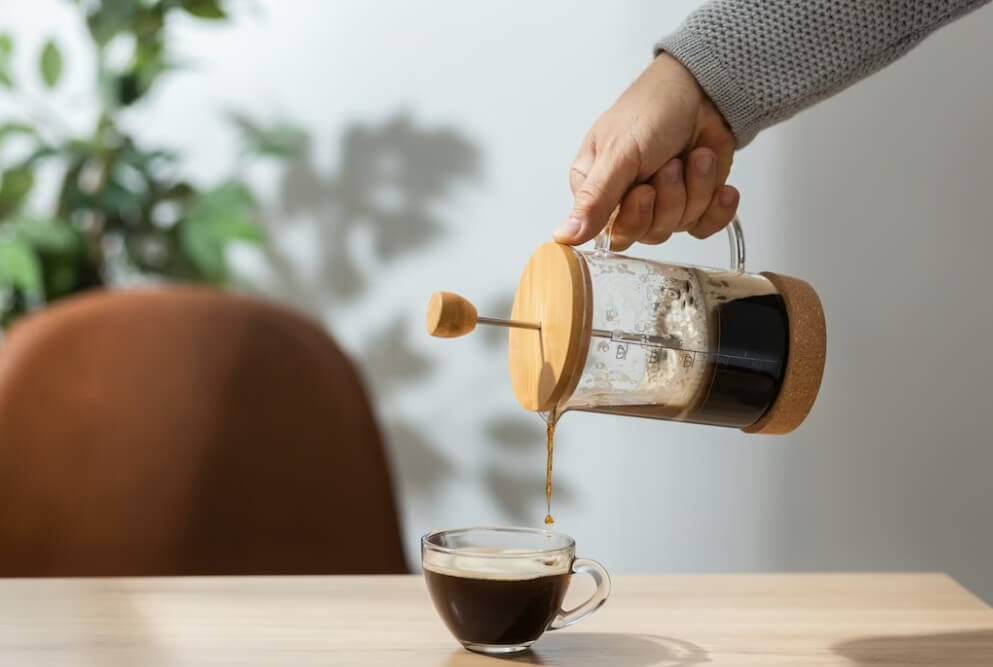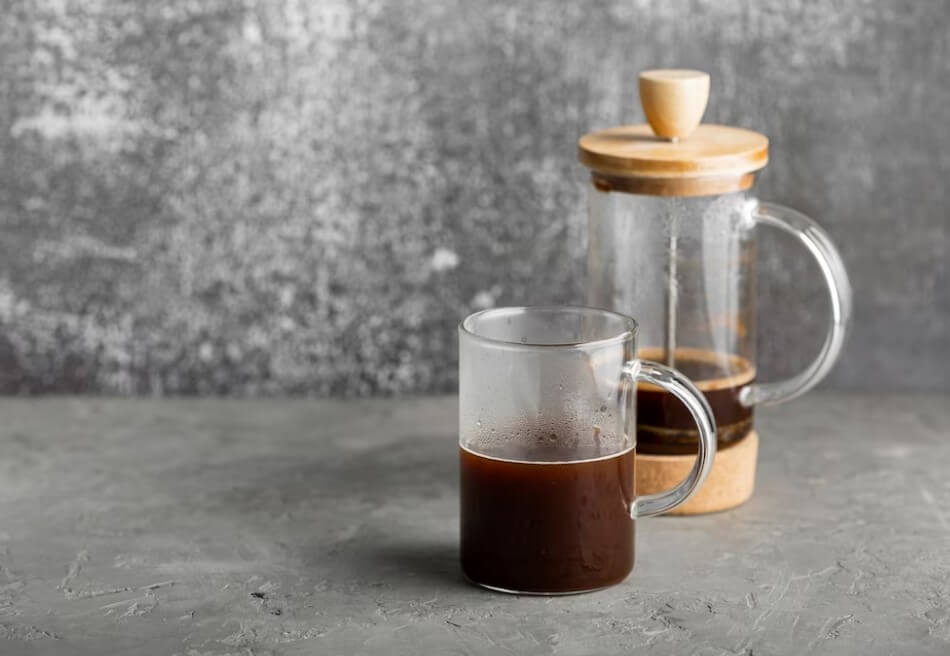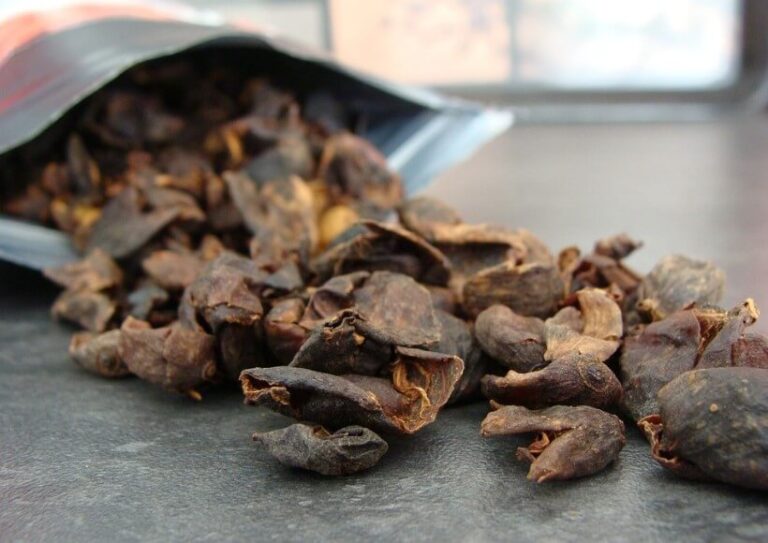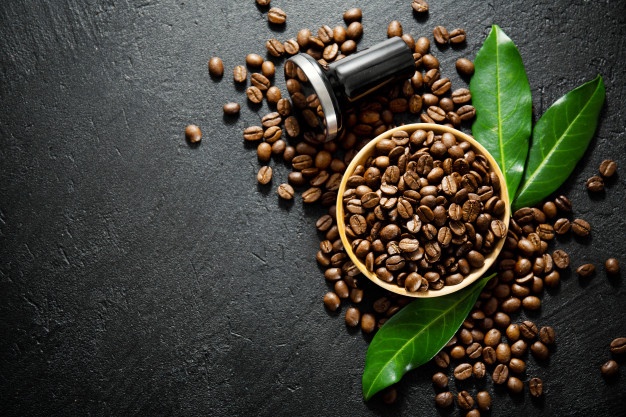I have previously written an article about the process of frothing milk – the French Press is not only perfect for that, but you can create an awesome hand drip with it, too!
However, in this article, I focus on the uses of the French Press, also known as a plunger coffee maker. Now you will learn how to brew a cup of perfect coffee easily.
You don’t require a barista course for this, just two items – hot water and freshly coarsely ground coffee. In addition, you’ll need a French Press. A stainless steel one is preferable, but a budget-friendly version with a plastic cover will work just as well.
How does the French Press work?
The French Press is a coffee-making device that provides an alternative to traditional methods. At first sight, some may assume it’s better suited for making tea, but that’s not the case. The plunger coffee maker dates back to the early 20th century, making it almost as old as the traditional drip coffee maker.
Brewing with French Press is a popular method for making coffee through infusion, allowing high-quality coffee to be brewed at home. It’s easy to acquire and affordable.
The French Press is comprised of two main components:
- a cylindrical glass container
- and a filter disc used for plunging.
During brewing, coarsely ground coffee is placed in a glass container. Then, you need to pour a specific amount of hot water. After letting it steep for a few minutes, the filter disc presses the coffee grounds to the bottom of the device, and the beverage is ready.
Now, let’s see how a true home barista does this!
How to make French Press coffee?
For the recipe, start with the standard ratios for alternative coffee-making. Therefore, for 1 liter of water, 60g of coffee is needed. Maintain this ratio based on the size of the device and the number of servings you intend to make at once.
I will use 15 grams of coarsely ground coffee and 250g of boiling water. This is the portion for one serving.
Now let’s see the process.
Boiling the Water
Boil filtered water and pour the preferably freshly roasted and ground 15g of coffee into the bottom of the glass container, then tare your scale!
The First Pour
Pour 50 grams of boiling water over the coffee, then gently stir the mixture to ensure even saturation. Wait for half a minute.
The Second Pour
Once 30 seconds have passed, carefully pour the remaining 200g of water, then gently mix the beverage with a spoon.
Steeping and Removing the “Coffee Foam”
Now, wait for 4 minutes. However, before the time is up, use a spoon to skim off the “foam” that forms on the drink’s surface. This step is crucial for achieving a much cleaner flavor experience.
Don’t skip this step! Make sure you do this before the 4 minutes are up!
Press Down the Plunger
At the 4-minute mark, place the plunger onto the device and gently press it down to the bottom of the container without applying too much force.
Consumption
Retrieve your favorite coffee mug and pour the prepared beverage into it. It looks even better if the cup is made of double-walled glass. Also, remember to preheat the cup before consumption!
TLDR French Press recipe:
- Pour water up to 50g, agitate (blooming)
- Pour up to 250g at 30 seconds, gently stir
- Skim off at 3:45
- Press down at 4:00

The Advantages of the French Press
The French Press’s advantage lies in its ability to produce high-quality coffee at home inexpensively, and you can customize it as you wish.
With a bit of practice and adjustments in proportions, you can always extract exciting flavors from your favorite coffee. Speaking of coffee: it’s also wonderful that you can freely use both dark and light-roasted coffee with this tool, but it’s crucial to use arabica coffee if possible for your brew.
The freshness of roasting and grinding also plays a significant role. Proper storage of the coffee also ensures that your last French Press brew tastes as rich as the first one.
It has been one of my favorite tools for a long time. I highly recommend it to everyone!
French Press Buying Guide
At Amazon, you can buy French Press coffee makers from 10$ to 30$.
Cheap French Presses often use lower-quality materials, such as thin glass or plastic, for the carafe and handle. The metal components might be less durable, and the filter may need to be more effective at keeping grounds out of the coffee.
The higher-quality French Presses have better insulation. Some even come with double-walled insulation, which helps maintain the coffee’s temperature for a longer period.
Not just the materials and the insulation, but the size matters too! French presses come in various sizes, typically measured in cups (4, 8, or 12 cups). Choose a size that matches your typical coffee consumption.
Some French presses include extra features like multiple filters, travel mugs, or additional carafes.
Check out the filter system too!
- Standard Mesh Filter: This filter separates grounds from coffee but might allow some sediment to pass through.
- Double-Layered Filter: Some high-end presses feature a finer mesh filter to minimize sediment, resulting in a cleaner cup.





Leave a Reply